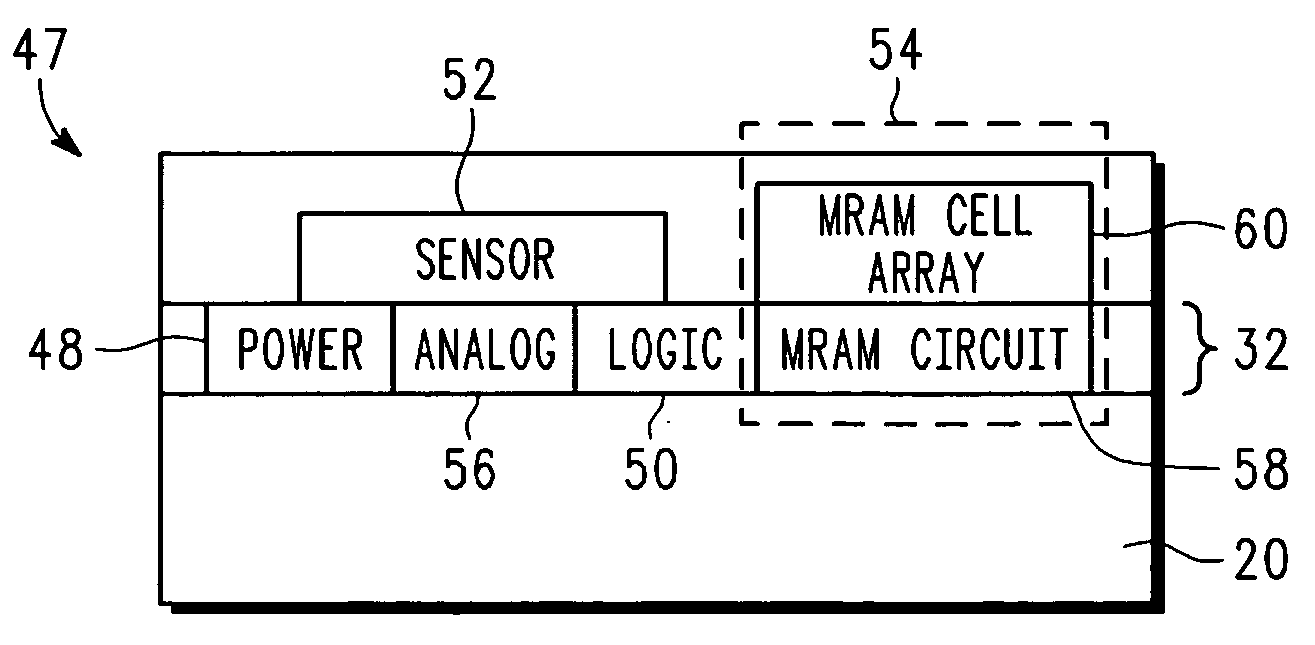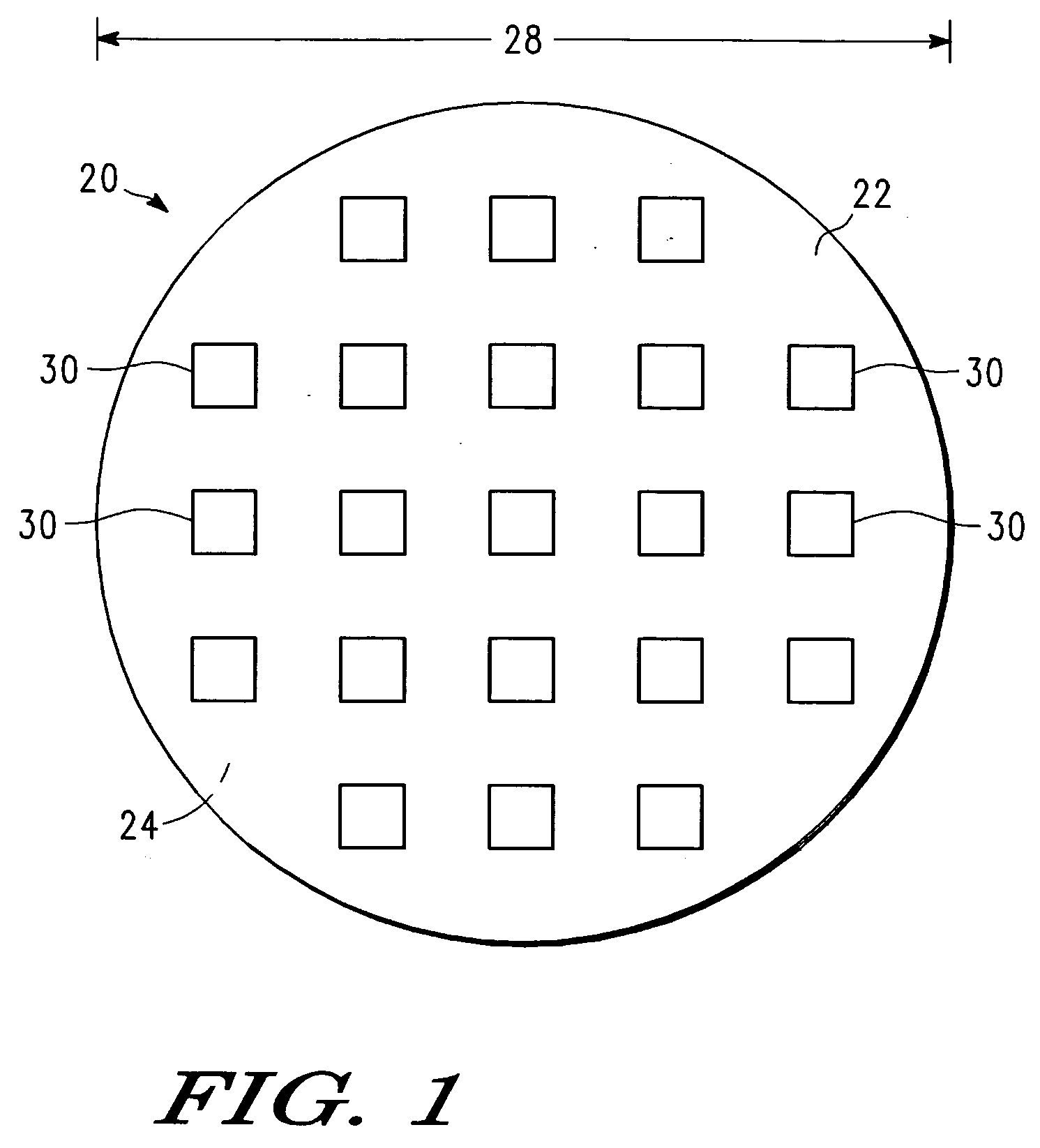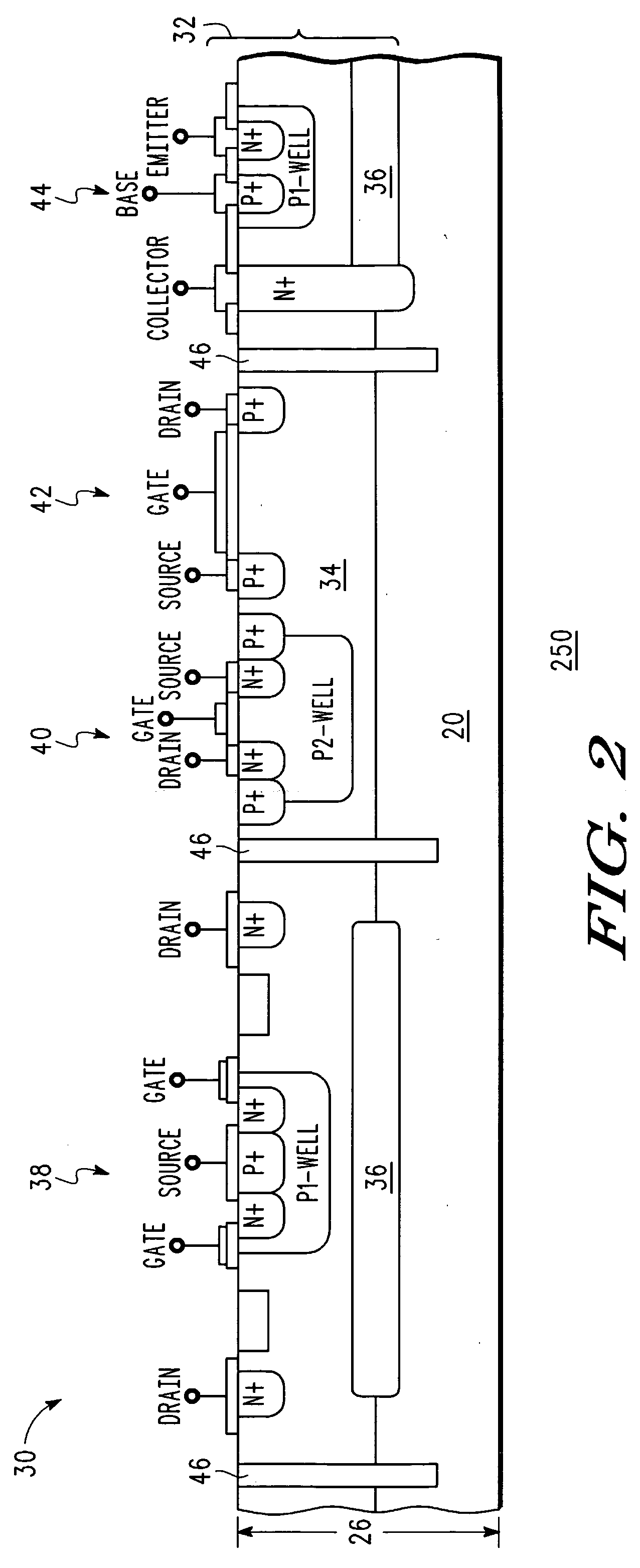Electronic assembly having magnetic tunnel junction voltage sensors and method for forming the same
a technology of magnetic tunnel junction and voltage sensor, which is applied in the direction of digital storage, instruments, and nanomagnetism, etc., can solve the problems of inability to synchronize voltage sensors, etc., to facilitate the growth of the tunnel barrier layer, improve the stability of the mtj cell 88, and facilitate the hysteresis loop. centered
- Summary
- Abstract
- Description
- Claims
- Application Information
AI Technical Summary
Benefits of technology
Problems solved by technology
Method used
Image
Examples
Embodiment Construction
[0014]The following detailed description is merely exemplary in nature and is not intended to limit the invention or application and uses of the invention. Furthermore, there is no intention to be bound by any expressed or implied theory presented in the preceding technical field, background, brief summary, or the following detailed description. It should also be noted that FIGS. 1-7 are merely illustrative and may not be drawn to scale.
[0015]FIG. 1 to FIG. 7 illustrate a microelectronic assembly and a method for sensing a voltage across portions of a microelectronic assembly, according to one embodiment of the present invention. A memory cell, having first and second electrodes, is provided. The memory cell also includes first and second ferromagnetic bodies positioned between the first and second electrodes and an insulating body positioned between the first and second ferromagnetic bodies. The first electrode is electrically connected to a first portion of the microelectronic ass...
PUM
 Login to View More
Login to View More Abstract
Description
Claims
Application Information
 Login to View More
Login to View More - R&D
- Intellectual Property
- Life Sciences
- Materials
- Tech Scout
- Unparalleled Data Quality
- Higher Quality Content
- 60% Fewer Hallucinations
Browse by: Latest US Patents, China's latest patents, Technical Efficacy Thesaurus, Application Domain, Technology Topic, Popular Technical Reports.
© 2025 PatSnap. All rights reserved.Legal|Privacy policy|Modern Slavery Act Transparency Statement|Sitemap|About US| Contact US: help@patsnap.com



